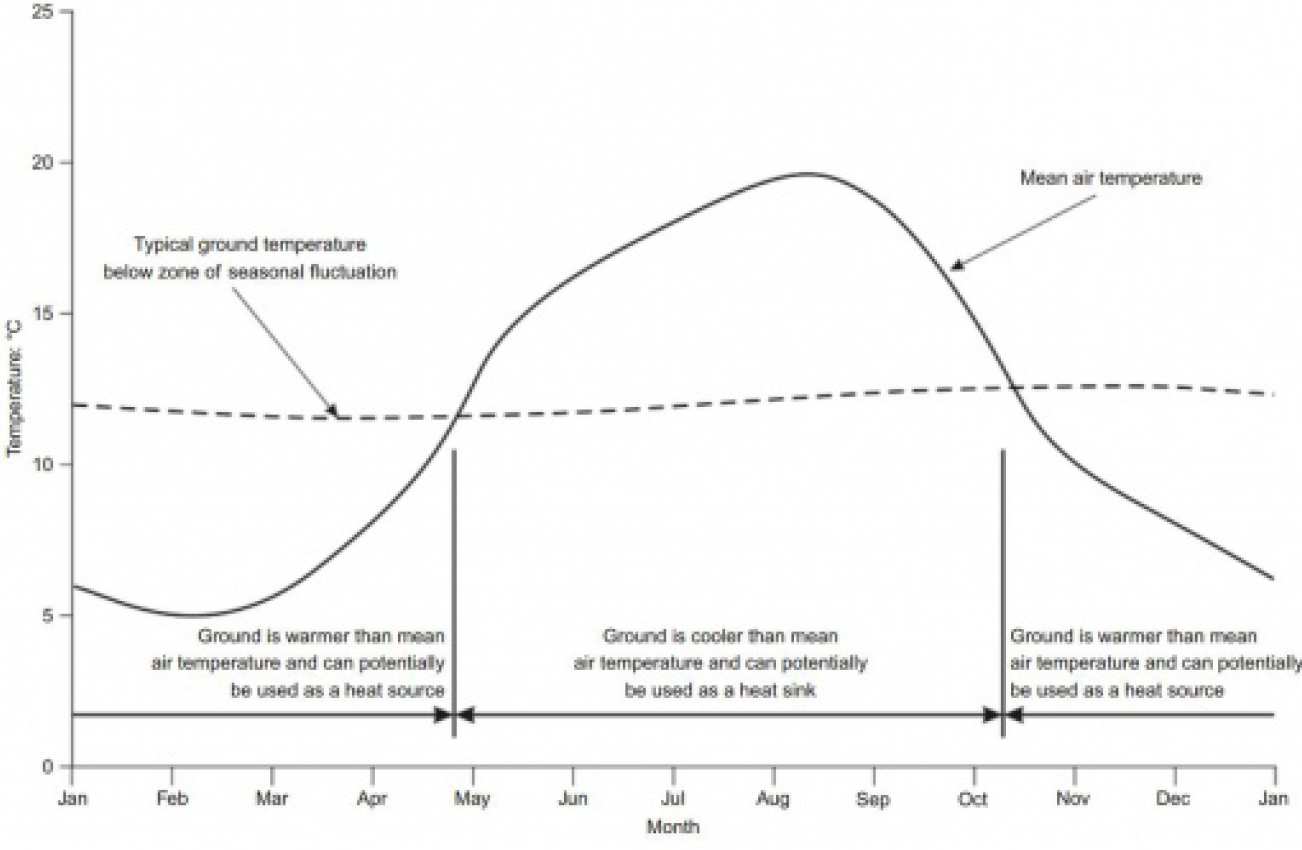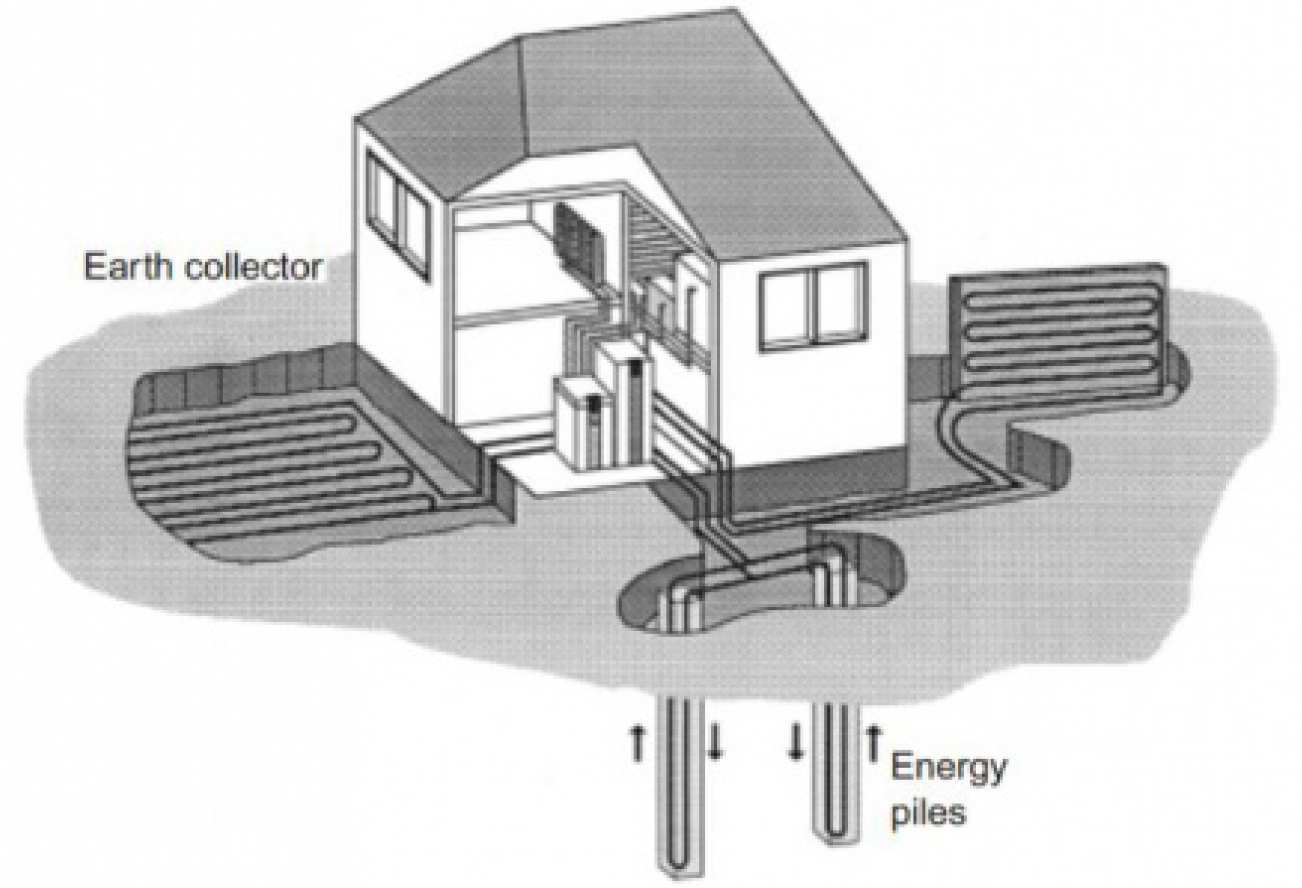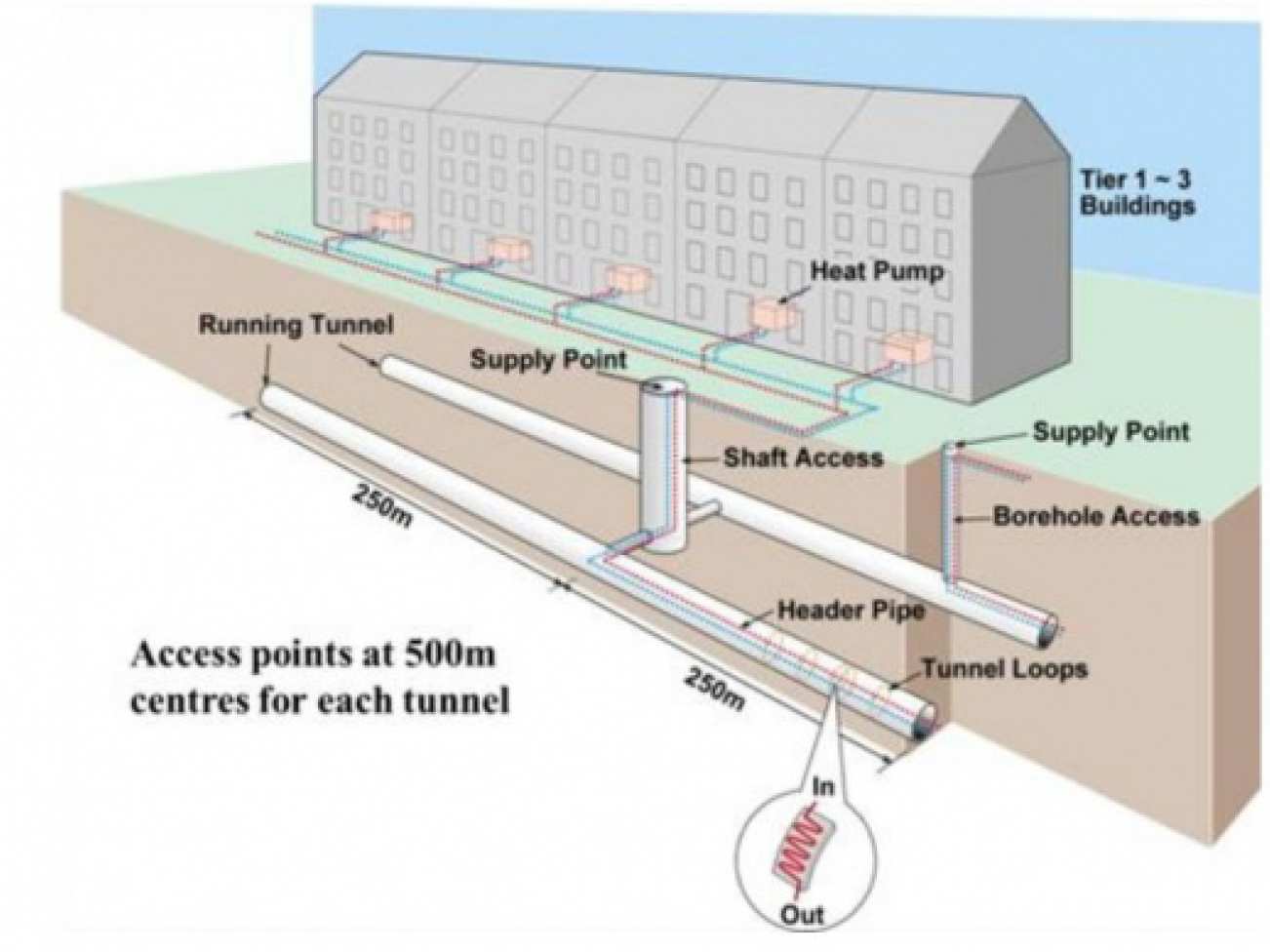Klementyna Gawecka
Numerical analysis of geothermal structures
Started: October 2013
Supervisor: Taborda, D.; Potts, D.M.
Funding: EPSRC
Description of Research
Fossil fuel reserves are diminishing and global energy consumption is increasing due to a constantly expanding population enjoying improved living standards. This means there is a growing concern over the management of the Earth’s resources. Rising energy prices as well as government sustainability polices encourage the use of renewable energy sources. Although the environmental benefits of renewable energy have been known for a long time, only recently have technological advances been able to make its use economically feasible.
This research project focuses on one type of renewable energy- shallow geothermal energy which provides an effective means of space heating and cooling. It is concerned with temperatures of less than 40°C and depths up to 300m. The ground temperature at depths greater than approximately 10m (depending on the local climate) is constant throughout the year (Banks, 2012) which allows for seasonal heat storage schemes, where excess heat removed from the building is stored within the ground during the summer and is then extracted to provide space heating during the winter.

Energy can be exchanged with the ground using heat pumps which circulate a fluid around a thermal loop (either open or closed) buried in the ground. In order to avoid the installation of additional, dedicated heat exchanger systems in the already crowded subsoil, this energy transfer between the building and the ground is often performed through geotechnical structures, which are required to provide stability, such as piles, retaining walls and tunnel linings (Brandl, 2006).
Due to its reliability and low carbon dioxide emissions this technology is becoming increasingly popular. In the UK, for example, the government has recently launched the Renewable Heat Incentive (RHI) scheme which covers ground source energy systems and aims to provide financial support for both domestic and non-domestic customers (Department of Energy and Climate Change, 2013).

However there is a gap in the understanding of the geotechnical performance of such energy systems. Substantial uncertainty remains over the implications to the engineering design of geothermal structures. Current practice consists of using a significantly higher Factor of Safety, disregarding the effect of repeated seasonal heating and cooling on the response of the soil surrounding thermo-active structures.
The main objective of this project is to provide guidelines to the design of geotechnical structures subjected to temperature variations due to heat exchange with the ground. This is to be accomplished by carrying out detailed computational studies of non-isothermal soil-structure interaction problems using ICFEP – Imperial College Finite Element Program (Potts & Zdravković, 1999).
In the first part of the research project a constitutive model capable of reproducing the non-isothermal mechanical behaviour of soils will be formulated and implemented into ICFEP. It will then be validated and calibrated with data available in the literature as well as results of laboratory tests on London Clay obtained using the state of the art temperature-controlled apparatus developed at the Geotechnics Section of the Department of Civil and Environmental Engineering. Lastly the model’s performance will be assessed by reproducing field studies such as the Lambeth College pile test (Bourne-Webb et al, 2009).

The second part will be concerned with the application of the developed constitutive model, in particular, simulation of the response of deep foundations, retaining walls and tunnels when used as heat exchangers. Comprehensive parametric studies will provide insight into the behaviour of geomaterials helping to establish what the focus of future in-situ and laboratory characterisation programmes should be. In addition, the outcome of these numerical simulations will contribute towards addressing the current gap in the design guidelines for such structures by allowing the effect of temperature to be accurately quantified and compared with the overall effects of mechanical loads.
References
- Banks, D. (2012) An Introduction to Thermogeology: Ground Source Heating and Cooling. 2nd Edition, Chichester, Wiley-Blackwell.
- Bourne-Webb, P. J., Amatya, B., Soga, K., Amis, T., Davidson, C. & Payne, P. (2009) Energy pile test at Lambeth College, London: geotechnical and thermodynamic aspects of pile response to heat cycles. Geotechnique, 59 (3), 237-248.
- Brandl, H. (2006) Energy foundations and other thermo-active ground structures. Geotechnique, 56 (2), 81-122.
- Department of Energy and Climate Change. (2013) Increasing the use of low-carbon technologies. [Online] Available from: https://www.gov.uk/government/policies/increasing-the-use-of-low-carbon-technologies/supporting-pages/renewable-heat-incentive-rhi [Accessed 10th December 2013].
- Nicholson, D.P., Chen, Q., Pillai, A. & Chendorain, M. (2013) Developments in Thermal Pile and Thermal Tunnel Linings for City Scale GSHP Systems. In: Proceedings Thirty Eighth Workshop on Geothermal Reservoir Engineering. 11 -13 February 2013, Stanford University, Stanford, California.
- Potts, D. M. & Zdravković, L. (1999) Finite Element Analysis in Geotechnical Engineering: Theory. London, Thomas Telford.
- Preene, M. & Powrie, W. (2009) Ground energy systems: from analysis to geotechnical design. Geotechnique, 59 (3), 261-271.
KLEMENTYNA GAWECKA PhD Candidate - Geotechnics
PhD Candidate - Geotechnics
Department of Civil & Environmental Engineering
Imperial College London SW7 2AZ
klementyna.gawecka09@imperial.ac.uk


